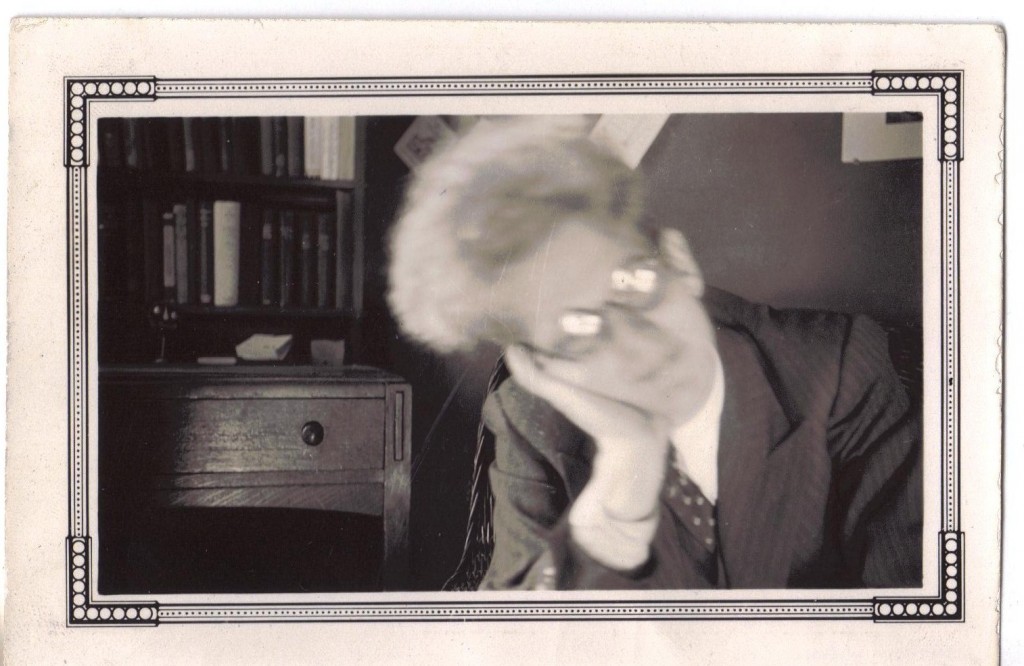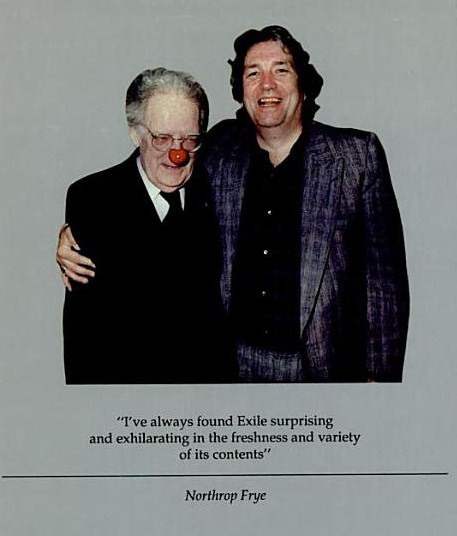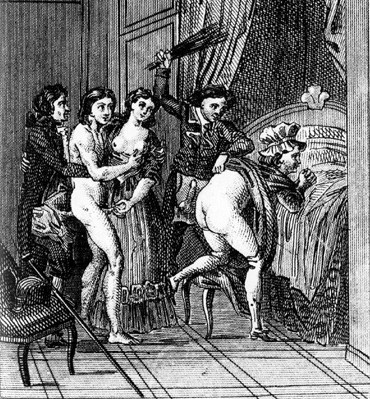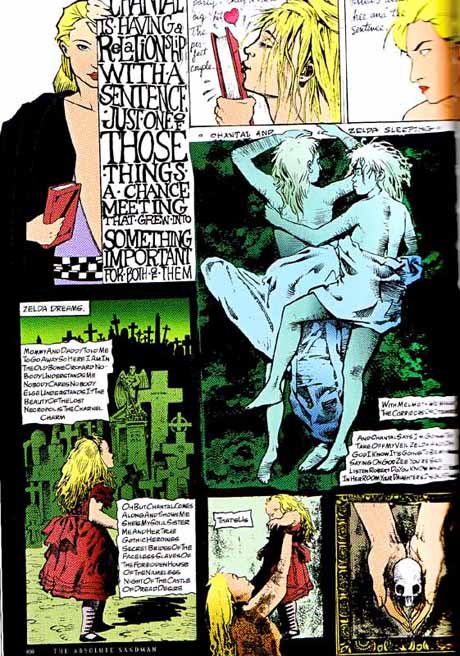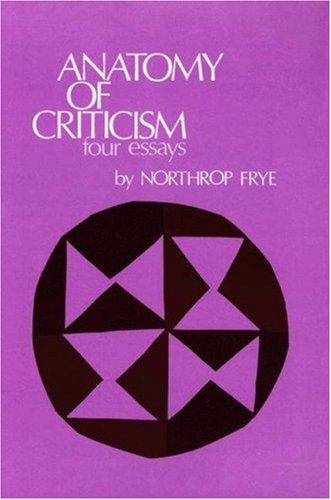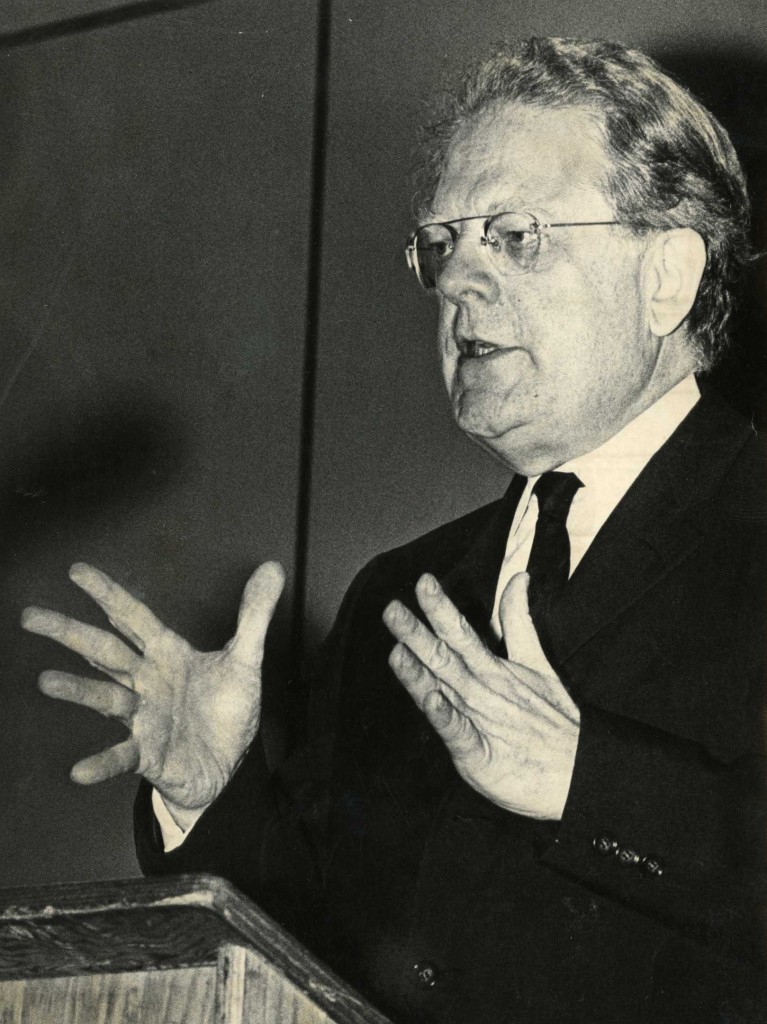
Regarding Bob Ashley’s earlier comment on Frye and rhetoric
The first essay I ever published was a paper written for Wayne Booth’s course in “Rhetorical Criticism”: “Northrop Frye and Rhetorical Criticism.” Xavier University Studies 11, no. 1 (1972): 1–11. Booth became my mentor and dear friend. Everything I know comes from Booth and Frye. Like Bob, I’m too far removed from the academy to know much of anything that’s going on in rhetorical studies. I scanned the Frye bibliography of secondary materials for “rhetoric” and came up with the list below. Most of these studies are only tangentially related to the issue Bob raises, though Hernadi, Gorak, and Kenny might prove useful. I think if I were to study the issue I’d start with Frye’s Seattle epiphany on oracle and wit (see previous post here), and then try to relate this to his sense of an ending. Frye’s endings are often oracular.
Blasing, Mutlu Konuk. American Poetry: The Rhetoric of Its Forms. New Haven, CT: Yale University Press, 1987. Examines the poetic strategies of Poe, Emerson, Whitman, and Dickinson and relates them to the four levels of symbolism in Frye’s Anatomy.
Dillon, George L. “Rhetoric.” The Johns Hopkins Guide to Literary Theory & Criticism. Ed. Michael Groden and Martin Kreiswirth. Baltimore: Johns Hopkins University Press, 1994, 616–17. Summarizes Frye’s theory of rhetoric, along with the theories of I.A. Richards and Paul de Man.
Druff, James H., Jr. “Genre and Mode: The Formal Dynamics of Doubt.” Genre 14 (Fall 1981): 295–307 [299–302]. Believes that Frye’s distinction between genre and mode is too clear-cut and that we can understand better some of the disharmony in the forms of modern fiction if we see the two concepts as related, genre having a historical dimension and mode a rhetorical one.
Gorak, Jan. “Frye and the Legacy of Communication.” In Lee and Denham, Legacy, 304–15. Opposes Frye’s view of communication, derived from literature as a means of human liberation, to the coercive communication of contemporary media––rhetorical or dialectical communication. In his late writings Frye is eager to explore the interactions between the two.
Hernadi, Paul. “Ratio Contained by Oratio: Northrop Frye on the Rhetoric of Nonliterary Prose.” In Denham and Willard, Visionary Poetics, 137–53. Argues that the ideas in the last section of the theory of genres in the Anatomy prefigure several current concerns in the study of texts, including the question whether literature can be distinguished from nonliterature. Concludes that Frye’s answer to the question is ambiguous: ratio both contains and is contained by oratio. In this respect Frye differs from both the formalists, who see clear distinctions between the literary and the nonliterary, and the poststructuralists (e.g., de Man and Eagleton), who do not.
Kenny, Robert Wade. “Truth as Metaphor: Imaginative Vision and the Ethos of Rhetoric.” In The Ethos of Rhetoric. Ed. Michael J. Hyde, et al. Columbia: University of South Carolina Press, 2004. 37–55. On Frye’s view that imaginative vision is the fundamental feature of human experience for Blake and the significance of such vision for rhetorical theory and practice. Also remarks on the teleological thrust of Frye’s criticism and his view of existential metaphor.
Kristeva, Julia. ‘The Importance of Frye.” In Lee and Denham, Legacy, 335–7. An homage to Frye, in which the Anatomy is said to have opened up “the field of literary criticism to an ambition which may appear excessive but which, only in this way, can ever hope to approach the extraordinary polysemy of literary art and take up the challenge it permanently poses. The modalities of criticism, designated or hoped for by Frye . . . can be disputed; others can be added. But it is undeniable that these types of critical approaches allow us, once they are linked, to decompartmentalize the technical enclosures in which contemporary literary theory habitually delights and to aspire to a capable interdisciplinarity. The particular emphasis that Frye puts on the archetype as symbol which links one poem to another and allows us to unify and integrate our literary experience seems to me indeed an ethical requirement––not to lose sight of the content conveyed by rhetorical play, and to anchor this content in the Western metaphysical tradition.”
Kuchar, Gary. “Typology and the Language of Concern in the Work of Northrop Frye.” Canadian Review of Comparative Literature/Revue Canadienne de Litterature Comparée 27, nos. 1–2 (March–June 2000): 159–80. Examines Frye’s view of typology as a mode of rhetoric and historical mode of thought and its relation to his understanding of metaphor and primary concerns. Also outlines the relationships between Frye’s views and Patristic exegesis, Lacanian psychoanalysis and existential phenomenology.
Long, Douglas. “Northrop Frye: Liberal Humanism and the Critique of Ideology.” Journal of Canadian Studies/Revue d’Études canadiennes 34, no. 4 (Winter 2000): 27–51. Despite Frye’s wish to contribute to the discussion of fundamental socio-political issues, his reflections have received scant attention from social scientists. Illustrates some of Frye’s political concerns and insights and discovers, especially in Words with Power, the basis for a critique of the modes of political discourse. Concentrates on the difference between the divisive rhetoric of ideology, expressive of the human urge of domination and advantage, and the inclusive and unifying language of myth, expressive of what Frye calls “primary concerns.” See also Michael D. Behiels’s introduction to this issue, 9–14.
McCutcheon, Russell T. Review of Marc Manganaro’s Myth, Rhetoric and the Voice of Authority: A Critique of Frazer, Eliot, Frye and Campbell. University of Toronto Quarterly 66, no. 1 (Winter 1996–97): 359–63. On, among other things, Manganaro’s analysis of the rhetoric of Frye’s comparative method in The Critical Path.
Manganaro, Marc. “Northrop Frye: Ritual, Science, and ‘Literary Anthropology.’” Myth, Rhetoric, and the Voice of Authority: A Critique of Frazer, Eliot, Frye, & Campbell. New Haven: Yale UP. 1992, pp. 111–50. On the relations between Frye’s criticism and the comparative method of anthropology. Argues that Frye’s view of the way science uses facts and theory is similar to Frazer’s. Frye’s authority derives from his “invoking what cannot be imagined: the perfect, ultimate originary unity of things.” The rhetoric Frye uses to map out his views of literature is found also in his social and educational theories: it reveals Frye’s commitment to structure, continuity, and essentialism, as well as his mystification of the “historically contingent” and ideology.
Sutton, Jane. “The Death of Rhetoric and Its Rebirth in Philosophy.” Rhetorica 4, no. 3 (1986): 203–26. Examines the relationship between rhetoric and philosophy in the nineteenth and twentieth centuries through the methods of Frye, Kenneth Burke, and Hayden White.
Thomas, Brook. “The New Historicism and the Privileging of Literature.” Annals of Scholarship 4 (Summer 1987): 23–48. Draws on Frye’s discussion of the distinctions between literary and nonliterary discourse in the Anatomy, pointing out that although Frye claims all discourse is rhetorical and therefore literary, “this does not mean that there is no such thing as literature.” Looks at the critique of Frye by Terry Eagleton, maintaining that Eagleton’s view is a caricature and observing that both critics advocate the transforming power of literature. Finds Fredric Jameson’s “reading through Frye” to be a much better way of transforming Frye’s ethical view of literature into a politically sensitive criticism.
Wuthnow, Robert. Rediscovering the Sacred: Perspective on Religion. Grand Rapids, MI: Eerdman’s, 1992. Chapter 3, “Religious Discourse as Public Rhetoric,” uses Northrop Frye and Susan Rubin Suleiman as complementary visions on how persons from different perspectives can begin to understand one another.


